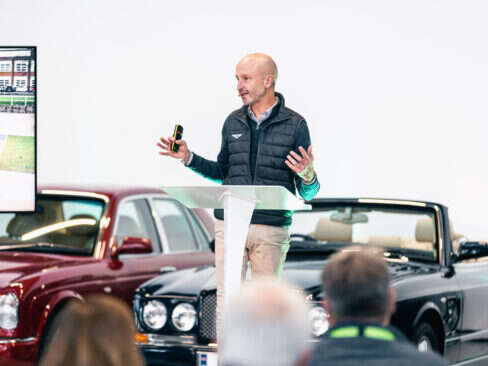
OwnerSilvano Lattanzi
If you liked “Raiders of the Lost Ark,” you will want to check out “The Secret of the Buried Shoes.” This epic, however, might get your feet some compliments. Recently Elite Traveler Editor-in-Chief Douglas Gollan visited noted Italian shoemaker Silvano Lattanzi during the Pitti Uomo Men’s Fashion Fair in Florence to find out why he buried over €500,000 worth of his finest footwear.
ET: Tell us a bit about your company.
Silvano Lattanzi: I think I am the last remaining shoemaker who continues to make shoes by hand. I do this helped by my family and a group of expert cobblers. I use only the best materials that are available, the most precious animal skins and leather. We sew the soles by hand with great care.
ET: How can Elite Traveler readers come to see your shoes?
Silvano Lattanzi: I have boutiques in Rome, Milan, St. Moritz, Porto Cervo, New York, Beijing, Shanghai and Hangzhou which I think are places your readers often come, and we would enjoy welcoming them. Our headquarters are in Sant’Elpidio a Mare and I would personally welcome them.
ET: How did you get your start?
Silvano Lattanzi: After several years as an apprentice, in 1971 I started my own company, Zintala, which is an inversion of my surname. It was a gift from my father, who was a very pragmatic man, to prompt me to start on this road. The two choices for young Italian men where there were possibilities for work was as an electrician or shoemaker. There were a lot of deaths of electricians so my father took me to a shoemaker near our house and asked him to take me as an apprentice.
ET: Is making shoes complicated?
Silvano Lattanzi: From the moment the skin is chosen there are over 300 operations to make a pair of Silvano Lattanzi shoes. It takes 30 to 33 hours and seven to 14 days to complete, depending on the humidity of the season. Of course, made to measure takes even longer and is more complex.
ET: What are the “buried shoes”?
Silvano Lattanzi: Well, to be truthful, I am always thinking about shoes and how I can do something different. And in this case I was sitting outside with a friend and we drank too much champagne, and I started to think what would be the effect of burying shoes. The method of the infossamento is a preservation and ageing technique which dates back to the fourth century. The local inhabitants of the nearby Rubicon River started to use the pit to preserve grains and cheeses until the end of winter for the following spring. The cheeses were covered by leaves and stored in the underground damp limestone caverns. The fossa shoes, which mean pit-buried shoes, are created following exactly the same procedure and are therefore aged naturally below the earth. And unlike cheese where it gives flavor, in the case of my shoes it enhances the color of the uppers. The leather takes on a natural nuance of tones and shades which are impossible to reproduce in a laboratory, meaning each shoe is truly unique.
ET: Where did you get the idea of burying shoes?
Silvano Lattanzi: In 1837, Giacomo Leopardi, the greatest Italian poet after Dante, died. Some 63 years later, due to a number of circumstances, his skeleton was dug up and what was intact were his boots. So in 2005, after too much champagne, in the garden next to my laboratory we made five pits. We buried around 50 pairs of shoes and four years later we uncovered them. At first we could not find them in the mud, but when we did they were quite extraordinary.
ET: But one couldn’t wear them after four years buried?
Silvano Lattanzi: After the extraction from the pits the procedure necessary to make the shoes wearable again began. After four years the sole was no longer usable. It was replaced; then the upper was cleaned, moisturized and reassembled on a wooden last where it remained to dry for two weeks. After that we applied the new sole. We didn’t change anything to the upper except to clean and polish it. It is the work of Mother Nature. So, I am passionate about what I do, as I think you can see.











